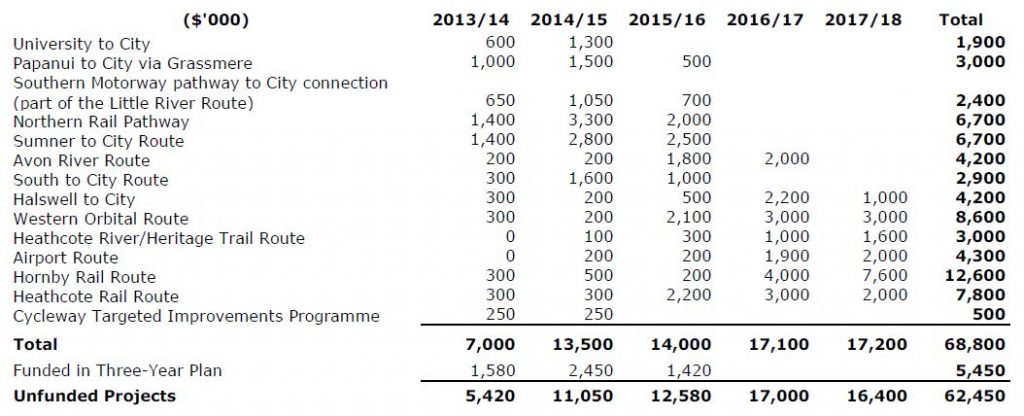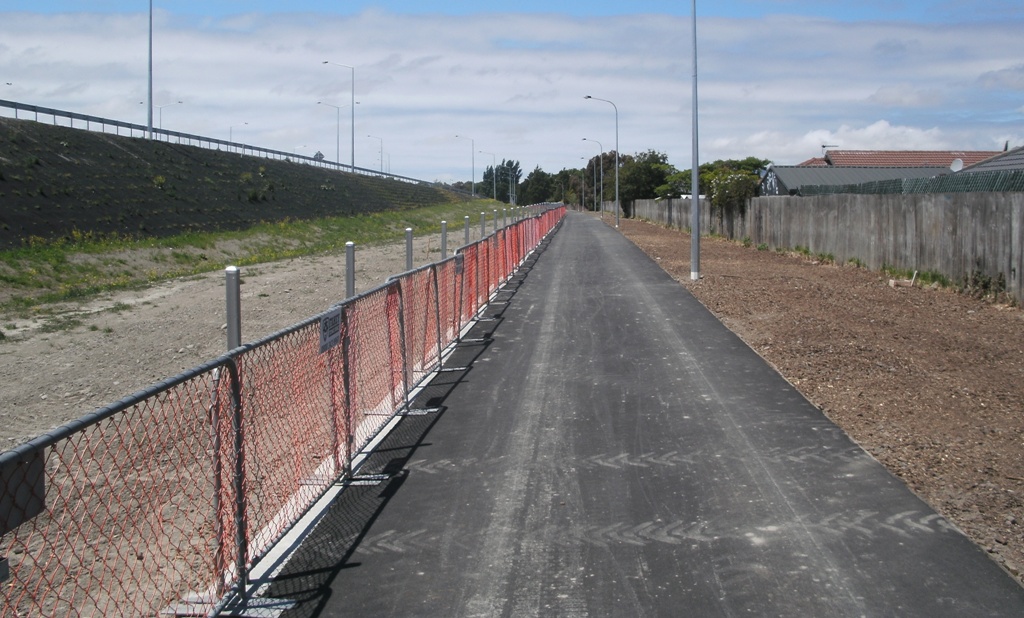When we think of the hundreds of millions that Christchurch (and NZ in general) is now spending on cycleways, it takes a bit to remember that not that long ago the prospect of finding even $70 million for local cycleways was contentions. This post, originally from Mar 2013, shows how a bit of politicking nearly managed to derail the start of our now much-heralded cycleway programme…
The good news: Council wants to spend $70 million in the next five years building an extensive cycleway network! The bad news (at least to ratepayers): They want to charge a $20 annual tax to pay for it! The good news: It’s not an extra $20 because they’ll be reducing your general rates by $20! The bad news: No-one knows about this, so everyone is grumpy about having to pay for cyclists!
 Confused? You’re not alone, thanks to the way this financial sleight-of-hand has been presented. The original draft Three-Year Plan for Council proposed just some investment in a couple of the proposed 13 cycleways and “quick wins” projects, as discussed here previously. However, Mayor Bob Parker, in a special report for his Councillors, proposed that the cycleways programme should be accelerated to complete all of the $70 million of suggested works within five years. The table below shows the planned breakdown (click to enlarge).
Confused? You’re not alone, thanks to the way this financial sleight-of-hand has been presented. The original draft Three-Year Plan for Council proposed just some investment in a couple of the proposed 13 cycleways and “quick wins” projects, as discussed here previously. However, Mayor Bob Parker, in a special report for his Councillors, proposed that the cycleways programme should be accelerated to complete all of the $70 million of suggested works within five years. The table below shows the planned breakdown (click to enlarge).

So how to pay for these? Well, effectively it would be by borrowing upfront and debt repayment over a longer time period; fairly standard stuff. This extra debt for cycleways would substitute some of the planned expenditure on road renewals. This makes sense; if you get more people switching to cycling then the roads won’t get worn out so quickly and hence you can defer some of your normal maintenance costs. (Long-term you’ll probably also be able to defer paying for future road capacity increases because traffic won’t grow as fast)
Now here’s where it got interesting: the Mayor proposed “the introduction of a Uniform Annual Charge as a contribution to the Council’s commitment to Active Travel. This charge would be $20 per annum and would be offset by an equal reduction in the general rate (this would result in the increase to ratepayers remaining at 6.6%).”
So (on the assumption that’s what Council agreed to) you can see that the intent was for the new cycleways to be rates-neutral. It might have seemed very symbolic to single out cycling, to highlight how it was being considered in this new Plan. But unfortunately, for anyone who didn’t read the fine-print, it just seemed like an extra tax for some cycleways, as was duly reported by The Press. And this made a lot of people grumpy about cyclists not paying for their own goodies (which as we learnt recently is not the case at all).
It is interesting how some people get very upset to be paying for something in their rates that they don’t think they will use (or that very few people at all will use). Notwithstanding the fact that half of the city already cycle sometimes and probably would like to cycle more, those who are left driving will no doubt greatly benefit from the reduced congestion on the roads. But it’s also a silly argument because there are plenty of things that Councils spend money on that we don’t use. I don’t benefit directly from social housing, the mobile library, Akaroa Boat Park, or some events like Classical Sparks. But I’m quite happy for Council to spend some money on these things for the good of the community (and just as importantly, I’m still able to take advantage of these facilities and services if I want/need to later).
And let’s not forget where Council spend a very large chunk of their money: As The Press noted, we will all be paying just under $8 a week for roads and footpath construction and maintenance. That’s about $400 a year each. Makes $20 seem like a bargain…
Still, the good news is that $70m of cycleways have been proposed for construction! It’s not yet a fait accompli; the draft Three-Year Plan will now go out for consultation in mid-March. And it will be important that the public comes out in force to strongly register their support for a cycle-friendly city.

So, has the $20 a year been worth it?
